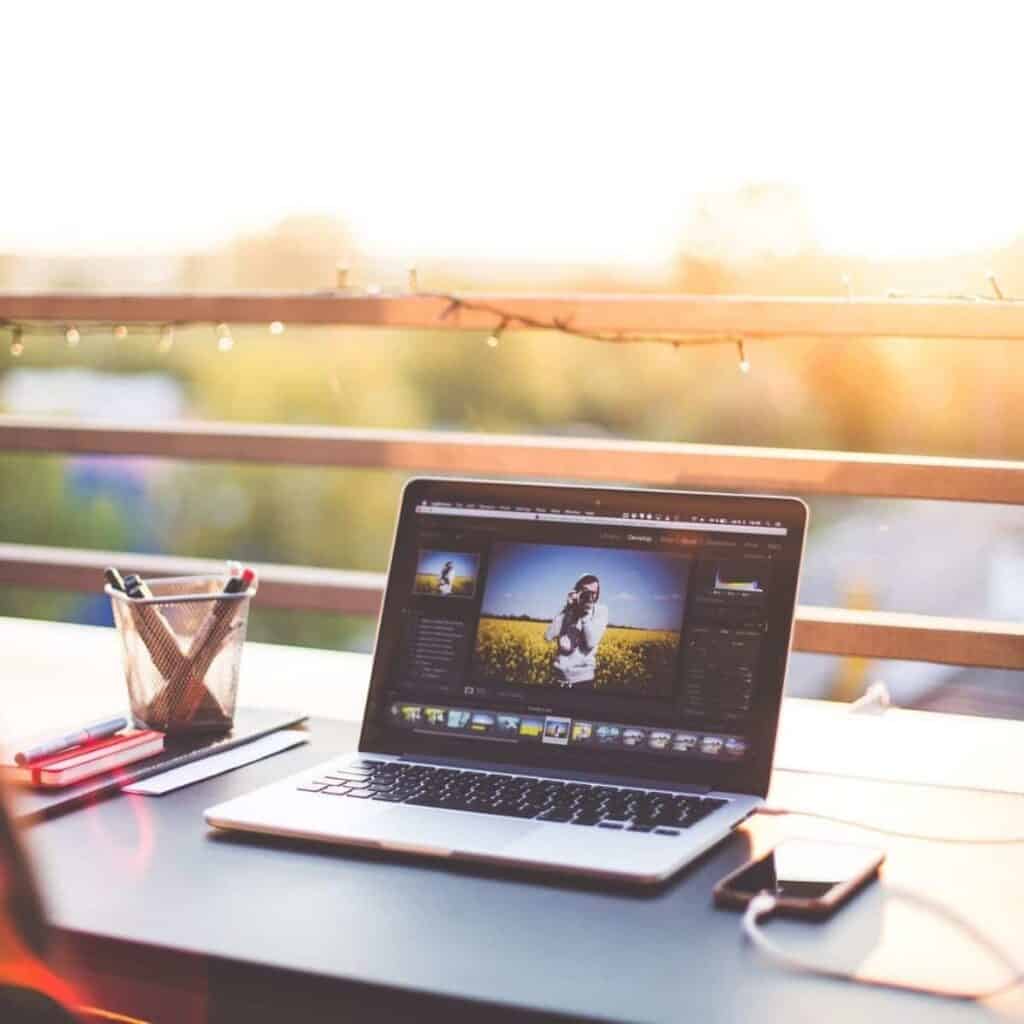Editing software can be overwhelming because there are so many things that you can do. Learn the must-know editing tips for beginners.

1. Crop and angle
Getting the perfect shot in-camera is difficult. Cropping and adjusting the angle of an image is required to make it look perfect.
Related: 10 beginner composition tips
Before you make adjustments to the brightness or colors of the image, work on cropping the photo and making sure it’s straight.
Most editing software can automatically straighten the image, or you can manually do it by using the angle adjustment tool.
Next, use the crop tool to create the perfect frame. When you’re cropping a photo, remember the following tips:
- Crop out distracting details.
- Use the rule of thirds.
- Leave space in front of your subject’s face.
- If it bends, don’t crop it. Avoid cutting off joints.
- Crop closely for a more dramatic photo.
When you’re cropping the photo, try different methods because you may find that one works better than the other.
It’s a great way to improve the composition of your image.
2. Exposure
The exposure tool will fix images that are too bright or too dark. Do your best to get the correct exposure in-camera because the details can be hard to recover.
Related: Get the Perfect Exposure eBook
To correct the exposure, you can use one of the following methods:
- Manually use the exposure slider.
- Select automatic exposure.
- Manually adjust the highlights, shadows, blacks, and whites.
The most helpful tool to make sure your exposure is well-balanced is to use the histogram. It’s a graph that’ll show you how light is distributed in the image.
The far left is 0% brightness or black, and the far right is 100% brightness or white.
Related: What’s the difference between DPI and PPI?
When you’re using the histogram, aim to get the majority of tones in the middle of the graph. It’ll result in a balanced photo.
3. White balance
White balance is the key to getting photos with colors that look natural. This is important for the background, skin tones of your subject, and the overall feel of an image.
When the white balance is incorrect, the image will look more blue or yellow.
Related: The complete guide to white balance
The only exception is when you’re doing it purposefully. You can use the white balance to make an image look warmer or cooler.
To adjust the white balance, you can manually alter the sliders, or your software can adjust it automatically.
You’ll select what you want to consider true white, and it’ll balance everything else.
4. Saturation and vibrancy
The colors in your image play a big role in the overall aesthetics.
Make adjustments to the saturation and vibrance to change the intensity of the colors.
The main difference between the two is that saturation adjusts all of the colors in an image while the vibrance adjusts the least saturated colors and pixels.
Use both of the tools to make the colors in your photo look enhanced. Avoid overdoing it because it can lead to a photo that looks fake.
5. Noise reduction and sharpening
Noise reduction makes your image look softer because it blurs the noise in a photo.
If you use too much of it, the image will look smoothed out, which doesn’t look good.
To make your photos look more clear, slightly reduce the noise and sharpen it. It also enhances the effect of being in sharp focus.
Use both to grab a viewer’s attention, enhance the texture, and make it look crisper.
Conclusion
You don’t need to use all of the tools in editing software to process great images. Instead, use the fundamentals because they make the biggest difference to achieving an amazing photo.
More resources:
- How to use layers in Photoshop
- What are the sizes for photo prints?
- How to fix an overexposed photo in Lightroom
Featured image courtesy of Pexels.
